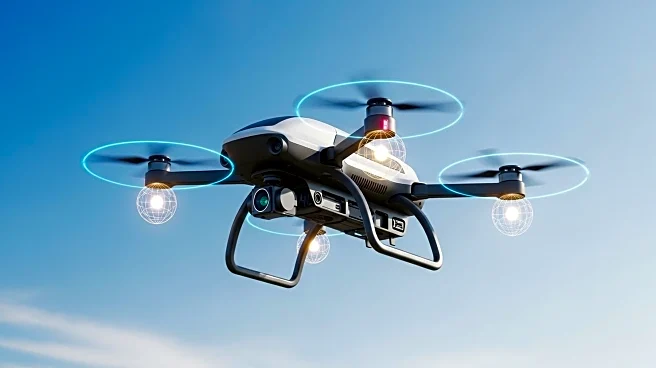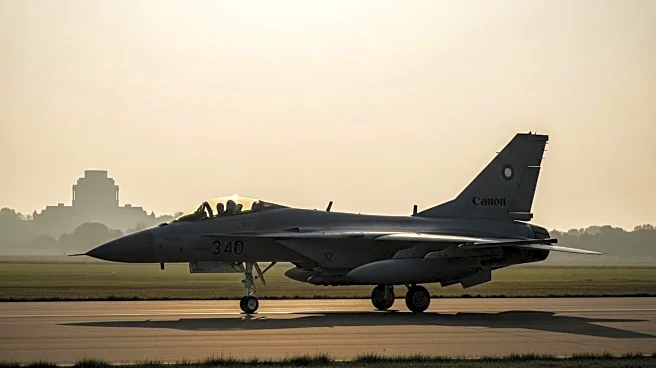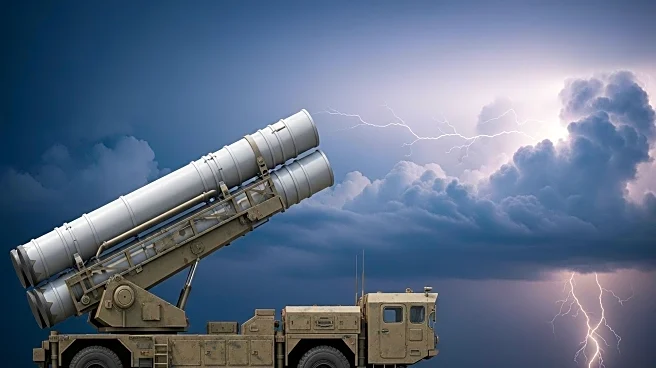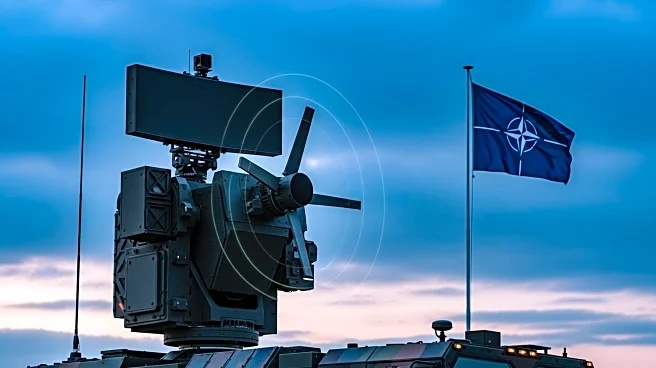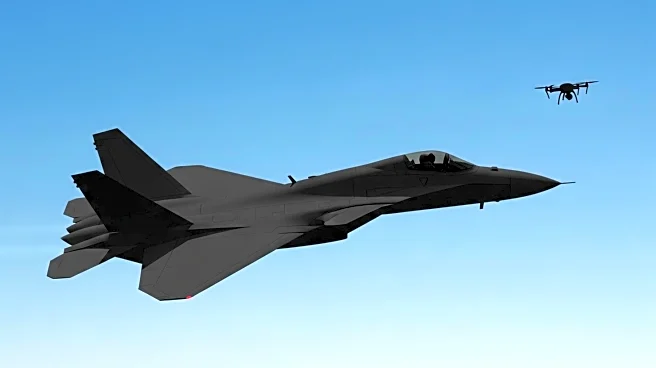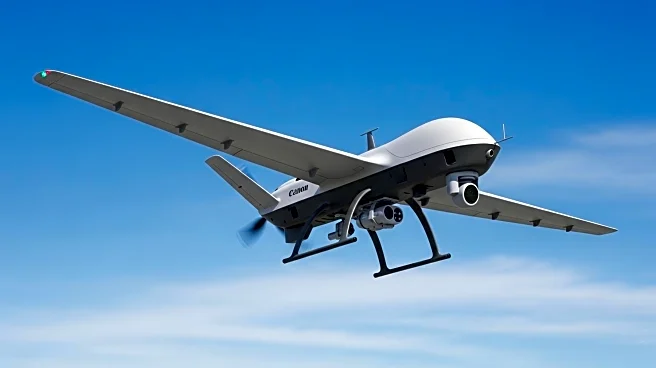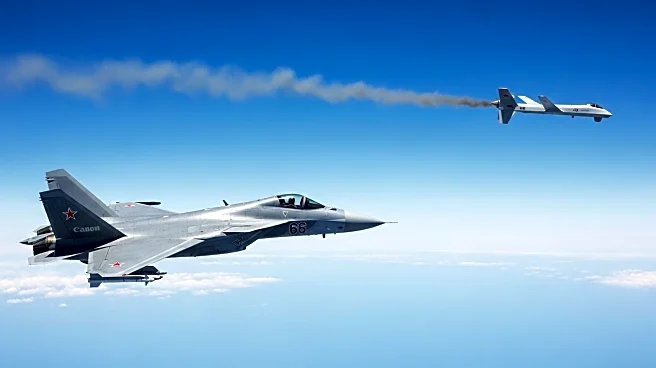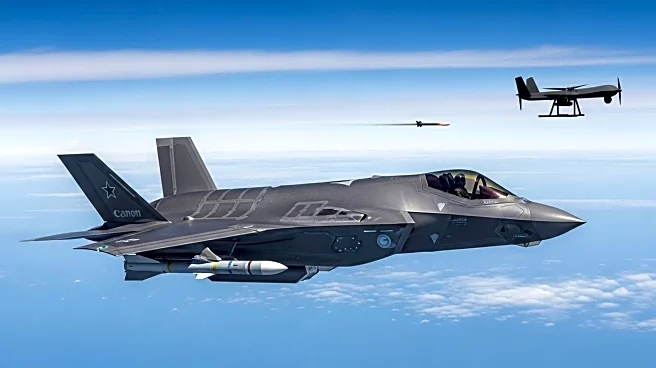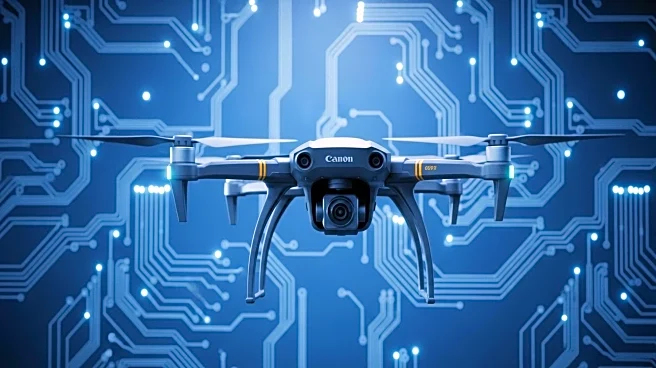What is the story about?
What's Happening?
A counter-unmanned aircraft system (C-UAS) developed by the US Naval Postgraduate School was tested on a Royal Netherlands Navy fast raiding, interception, and special forces craft (FRISC) during NATO's Exercise 'Bold Machina 25' in the Netherlands. The system, designed to detect Class 1 UAV threats, includes a suite of passive sensors from various industry partners. These sensors include radar, electro-optic/infrared, and radio frequency detection technologies. The system is modular and vendor-agnostic, allowing for integration with other sensors.
Why It's Important?
The trial of the C-UAS system highlights the growing importance of counter-drone technologies in modern military operations. As UAVs become more prevalent, the ability to detect and neutralize potential threats is crucial for maintaining security and operational effectiveness. The development of a modular and adaptable C-UAS system ensures that military forces can tailor their defenses to specific threats and environments. This capability is particularly significant for NATO forces, which must address diverse security challenges across different regions.
What's Next?
Following the successful trial, further testing and refinement of the C-UAS system are likely. The system's modular design suggests potential for widespread adoption across NATO and allied forces, enhancing their ability to counter UAV threats. Continued collaboration between military and industry partners will be essential to advancing the technology and ensuring its effectiveness in real-world scenarios.
AI Generated Content
Do you find this article useful?



